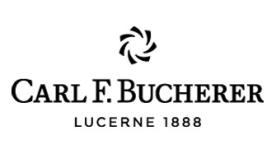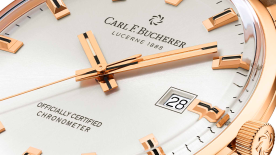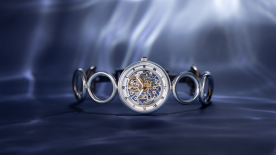Why did you decide to write a book about independent luxury brands?
There are numerous publications about the big luxury groups. There is also an abundance of literature about the history of luxury. But, strangely, there is nothing about independent luxury brands, nor about their different approaches, innovations, difficulties, successes or failures…But can we really think about luxury without talking about these independent companies that take risks and are incubators?
Independent Luxury is the first book in the world that deals exclusively with independent luxury brands.
With my co-author, Jonas Hoffmann, we decided to study independent luxury brands from very different fields: gastronomy, automobiles, jewellery, watchmaking, fashion accessories… These brands all possess what we summarise in our book as the BA2RE approach.
B for BELIEVING – this is the passion inherent in an individual that creates his or her brand. It is a vital force that you can neither buy nor create. Either it is there… or it isn’t.
This first stage is also the one that shows the strength of an entrepreneur who has to have enough self-confidence and create what he wants to rather than what his customer (or sometimes his investor!) wants. Remember the famous quote from Henry Ford: “If I had asked customers what they wanted, they would have said a faster horse!”
A for ANTICIPATING – this is the very clear vision that an independent brand needs to have of how the market, the environment and the competition will evolve. It’s a question of keeping in tune with the times and future developments.
A for ACTING – then it is a question of getting down to action and launching your products on the different target markets, at the same time developing the resources, competence and processes that this requires.
R for REACHING – this is not about reaching the end consumer but the “fan” or future fan of the product, the person who will like the brand, its products and who will be a genuine ambassador for the brand. In this case, it’s the emotional factor that is key.
E for ENDURING – this is a question of ensuring that the brand can develop and gain strength over time.
There are, of course, external factors – such as finance (the nerve centre) – that also play their part.
An independent brand has to make concessions, bring in one or more investors to provide capital: sometimes they may be active, with all the risks that this brings (the right to intervene, lack of knowledge of the sector, inflated ego), or more or less passive (such as an investment fund).
How does this work? What are the consequences? What freedom is left for the independent brand to innovate? These are some of the questions we answer in the book.
Independent luxury brands are often armed with nothing more than their passion and innovative spirit. In fact, we have identified four different strategies of innovation in the book (Back to the Roots / Code Breakers / Eagle in Aquarium / Game Changers) for independent brands.
Innovation is what allows an independent brand to set itself apart and to carve a niche out for itself. Without innovation, success is impossible.
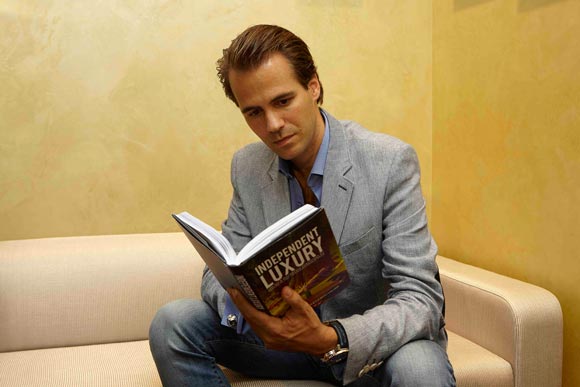
Some of the brands we have studied in the book will soon disappear, others will endure (or survive) a few years and the rest will become the key references of tomorrow. But beyond the results of the future, the most important thing is to understand what goes on inside an independent brand, the strategies it applies, the risks it takes. How come some of them manage to take off and remain independent while others are taken over by the big luxury groups?
For those who “criticise” independent brands, highlighting their “failures”, I would like to recall the story of Paul Galvin…
The name means nothing to you?
In the early 1920s he entered the battery business and failed miserably. But, far from being discouraged, he tried again a few years later. The result was the same. Penniless, he ended up living with his parents… So far, so normal. But Paul Galvin was not one to give up and his career did not end there. The name Motorola apparently came to him one morning, at his parents’ house, while he was shaving! The rest is history. Success followed a number of failures. It’s a philosophy that Albert Einstein summarised thus: “Anyone who has never made a mistake has never tried anything new.” This is what characterises independent brands, all the more so in the competitive luxury industry.
Using specific examples, Independent Luxury will take you to the very heart of some independent brands in different areas of activity and will share their strategies, their risks and their visions. Our book also takes a look at products that are currently on the market and those that will be launched in the very near future. You can then bet on those that will survive in this jungle.
Who are the main people behind the book and its main contributors?
I was actively involved in the creation of a watch brand from scratch (Cyrus). I became CEO and invested my passion and energy in the brand. We won prizes from design and creativity and set up our own production facilities. At the time I didn’t have customers but I did have fans of the brand, people who wore our products with pride and who were very loyal to the brand and its innovative spirit. The emotional side of things was omnipresent.
But it was a long journey that was not always easy. I was sometimes faced with some very difficult situations for which there was no user manual. I often had to deal with multiple problems on my own. It is undoubtedly the best way to find solutions and to learn. I felt the need to share this rich, dense and complex experience.
This is what led me to write a book about independent brands. Jonas Hoffmann, a friend who is Associate Professor of Marketing at the SKEMA business school and a specialist in luxury, joined me on this project that he had also secretly been planning himself.
Together we shared our thoughts and experience with the aim of offering our readers something new. The first international press reviews have been excellent. We have also received a lot of encouraging messages from students, managers and even big names in the luxury industry. So our message has been well received.
What kind of reader are you targeting?
In the preface I dedicate the book to all those who share the belief that you are never too young to believe in your dreams or too old to make them come true.
More generally speaking the book is also aimed at professionals who want to know more about independent brands and the people behind them, as well as at the major groups who have since acquired a good number of such brands. But students will also appreciate the analytical and practical approach of the book.
The aim of our book – in which we have studied over 30 different brands – is to share our thoughts and focus on some key elements, the vital stages in the life of an independent brand. You might already be familiar with some of them, but you might also be unaware of some of the others. And without a doubt, some of them will be on the front pages of successful magazines in the future.
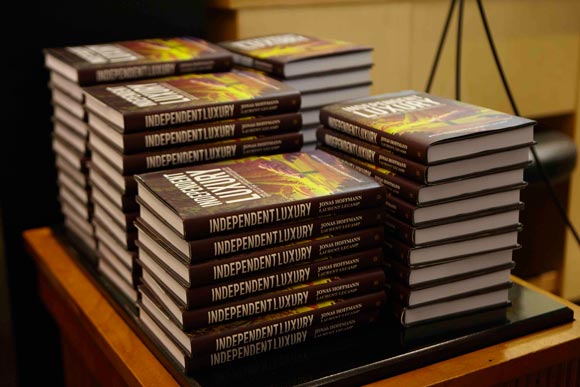
Which chapter do you think is the most important for the watch industry?
Among the various chapters in the book we deal with a lot of subjects that are related to the watch industry. Examples are the policy of margins, problems of future supplies of movements and components, the development of mono-brand stores, pressure on retailers and distributors, raising capital, the need for a new type of marketing (…). These subjects are all covered in detail and always richly documented.
We also consider the strategies of the major luxury groups (Richemont, Swatch, LVMH, Kering) both in terms of their acquisitions and their medium to long-term development. We note that “emotional” luxury and “experiential” luxury are both becoming increasingly important. Groups such as LVMH are fighting to be at the forefront of this movement and one example is LVMH (after competing with Prada) acquiring the historic Cova coffee house (which is renowned for its famous pastries) in Milan! Prada immediately reacted by buying Marchesi, another big name in the field, also in Milan.
These examples are interesting because they reflect the very change that is taking place. New generations, unlike their forebears, are not looking to timepieces as a means of self-affirmation or as a status symbols. They prefer the notion of experience. In this respect, gastronomy is booming, as is the service sector. Isn’t it remarkable that among the top 15 most sought-after hotels by Chinese customers (the current target customer for Swiss Made timepieces), five places are taken by the Four Seasons chain?
One way or another, it is vital for watch industry professionals to realise that the hedonistic aspect of pleasure and emotion is becoming more and more important in the world of luxury. The challenge is to incorporate this aspect into a timepiece. Are one or two centuries of watchmaking history enough to meet the needs of the new generation of customer? We do not think so. It may be genuinely important and a point of differentiation, but on its own it is not enough to meet these challenges.
Timepieces must be objects of pleasure, surprise and desire. It is not the brand on its own that will make the decision but the emotional bonds it creates. In the book we mention brands like HYT and MB&F and we study them in great detail. They aim to catch your eye, to surprise. They do not have consumers; instead they have genuine “fans”. They have managed to create their own universe, and that is what makes all the difference. They may not be “accessible” because of their high price point, but what would happen if their concepts did become moe “accessible”?
We also look at luxury accessories, which have co-opted the codes of watchmaking and improved upon them. This is the case, for example, with Roland Iten or the cufflink brand Encelade-1789 whose innovation, quality and design have captured the attention of an extremely demanding group of “fans”. In the case of Encelade-1789, bringing cufflinks up to date with contemporary designs was certainly not easy but their “code-breaker” innovation and the BA2RE philosophy have allowed them to develop fantastically and solidly, with a very distinctive DNA.
Aren’t you worried about a conflict of interest with Carl F. Bucherer, where you are Executive Vice-President in charge of sales?
Quite the contrary!
Carl F. Bucherer is an independent brand that belongs to the Bucherer group, which has been in the hands of the same family since …1888! This brand has managed to conserve and convey the key values of respect, integrity and innovation. And I am very proud to be part of this in a key position.
If you were to ask me for an example of one collection to illustrate my point about the community of “fans” and the cration of a different universe, I would not hesitate to pick the Carl F. Buchere Patravi TravelTec collection. The movement and its functions are proprietary and it has a distinctive design with a monopusher at 11 o’clock. It is immediately recognisable thanks to a unique combination of a three-zone display with its own chronograph.
The brand has been managed since 2010 by a young CEO, Sascha Moeri, who has totally mastered the recipe for success of an independent brand: innovation, a long-term view and passion! And the results of the brand, on an international level, speak for themselves.
On this subject, how do you expect the market to move between now and the end of the year?
I’m not interested in news, otherwise I might well have given up faced with the constant deluge of bad news published daily all over the media. Over the past few months I have been able to open up and develop some markets that other brands have said were dead – either politically or economically – because I was convinced that the brand values of Carl F. Bucherer found a positive echo there. And it has worked very well.
The coming months will be difficult, undoubtedly, but consistent work in close cooperation with customers (retailers, distributors, end customers…) will always make a difference. Because a lot of brands forget that emotion is at the heart of everything. And emotion comes above all from relationships. Be available to your customers 100%, at any time, listen to them and accompany them. This is not an anti-crisis remedy but it will make a difference over the medium and long term. It’s undeniable. I see brands cutting their travel budgets in these “difficult” times when it is precisely now that retailers, distributors and subsidiaries need support. You need to be active and show that you are there, come what may.
Add to that a BA2RE attitude and a touch of innovation and the magic potion is ready to drink ;)


